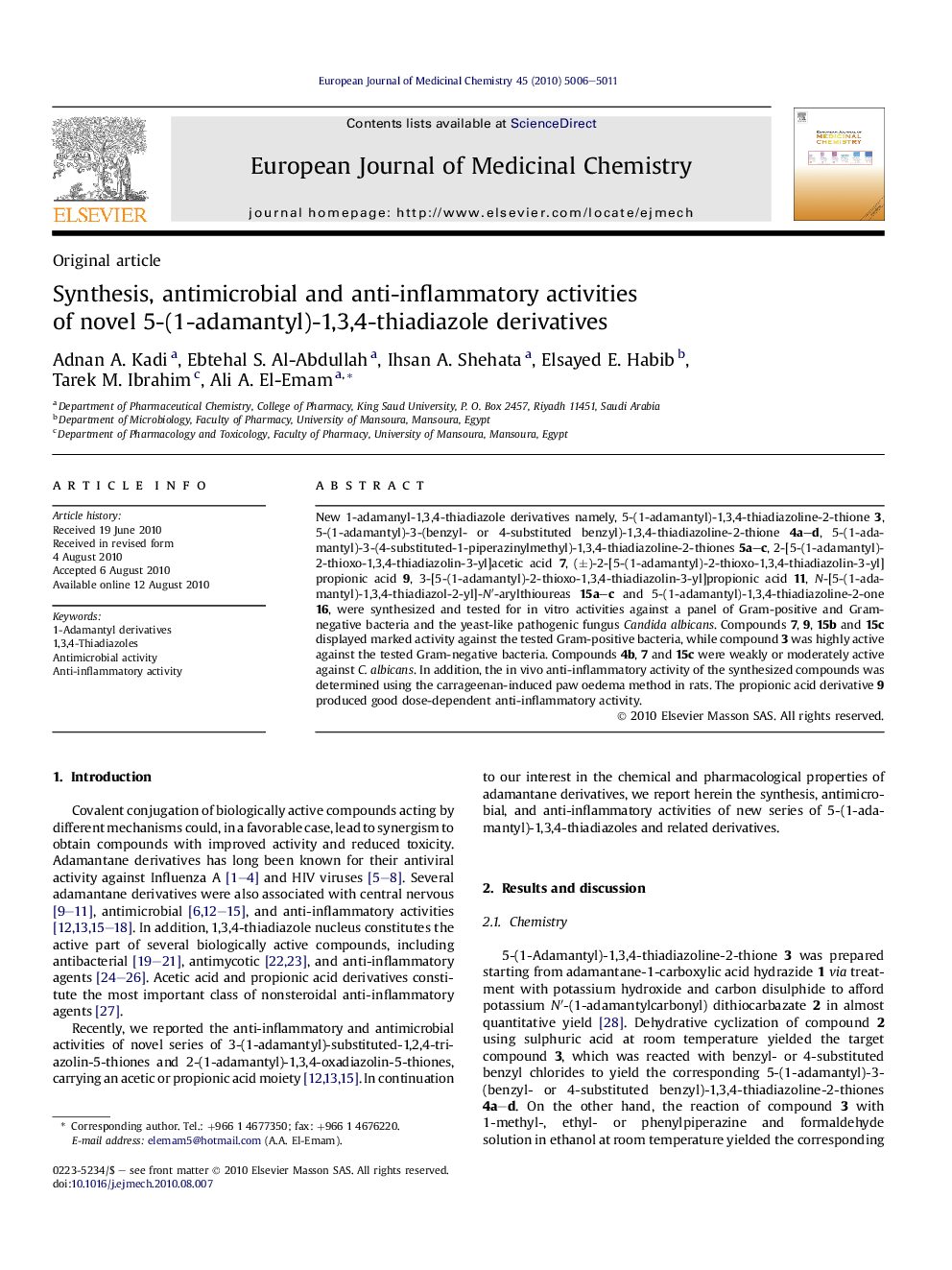| Article ID | Journal | Published Year | Pages | File Type |
|---|---|---|---|---|
| 1396271 | European Journal of Medicinal Chemistry | 2010 | 6 Pages |
New 1-adamanyl-1,3,4-thiadiazole derivatives namely, 5-(1-adamantyl)-1,3,4-thiadiazoline-2-thione 3, 5-(1-adamantyl)-3-(benzyl- or 4-substituted benzyl)-1,3,4-thiadiazoline-2-thione 4a–d, 5-(1-adamantyl)-3-(4-substituted-1-piperazinylmethyl)-1,3,4-thiadiazoline-2-thiones 5a–c, 2-[5-(1-adamantyl)-2-thioxo-1,3,4-thiadiazolin-3-yl]acetic acid 7, (±)-2-[5-(1-adamantyl)-2-thioxo-1,3,4-thiadiazolin-3-yl]propionic acid 9, 3-[5-(1-adamantyl)-2-thioxo-1,3,4-thiadiazolin-3-yl]propionic acid 11, N-[5-(1-adamantyl)-1,3,4-thiadiazol-2-yl]-N′-arylthioureas 15a–c and 5-(1-adamantyl)-1,3,4-thiadiazoline-2-one 16, were synthesized and tested for in vitro activities against a panel of Gram-positive and Gram-negative bacteria and the yeast-like pathogenic fungus Candida albicans. Compounds 7, 9, 15b and 15c displayed marked activity against the tested Gram-positive bacteria, while compound 3 was highly active against the tested Gram-negative bacteria. Compounds 4b, 7 and 15c were weakly or moderately active against C. albicans. In addition, the in vivo anti-inflammatory activity of the synthesized compounds was determined using the carrageenan-induced paw oedema method in rats. The propionic acid derivative 9 produced good dose-dependent anti-inflammatory activity.
Graphical abstractNew series of 5-(1-adamantyl)-1,3,4-thiadiazoles were synthesized as potential antimicrobial and anti-inflammatory agents. Compounds 3, 7 and 9 displayed marked antibacterial activity. Meanwhile, compound 9 exhibited good dose-dependent anti-inflammatory activity in rats.Figure optionsDownload full-size imageDownload as PowerPoint slide
